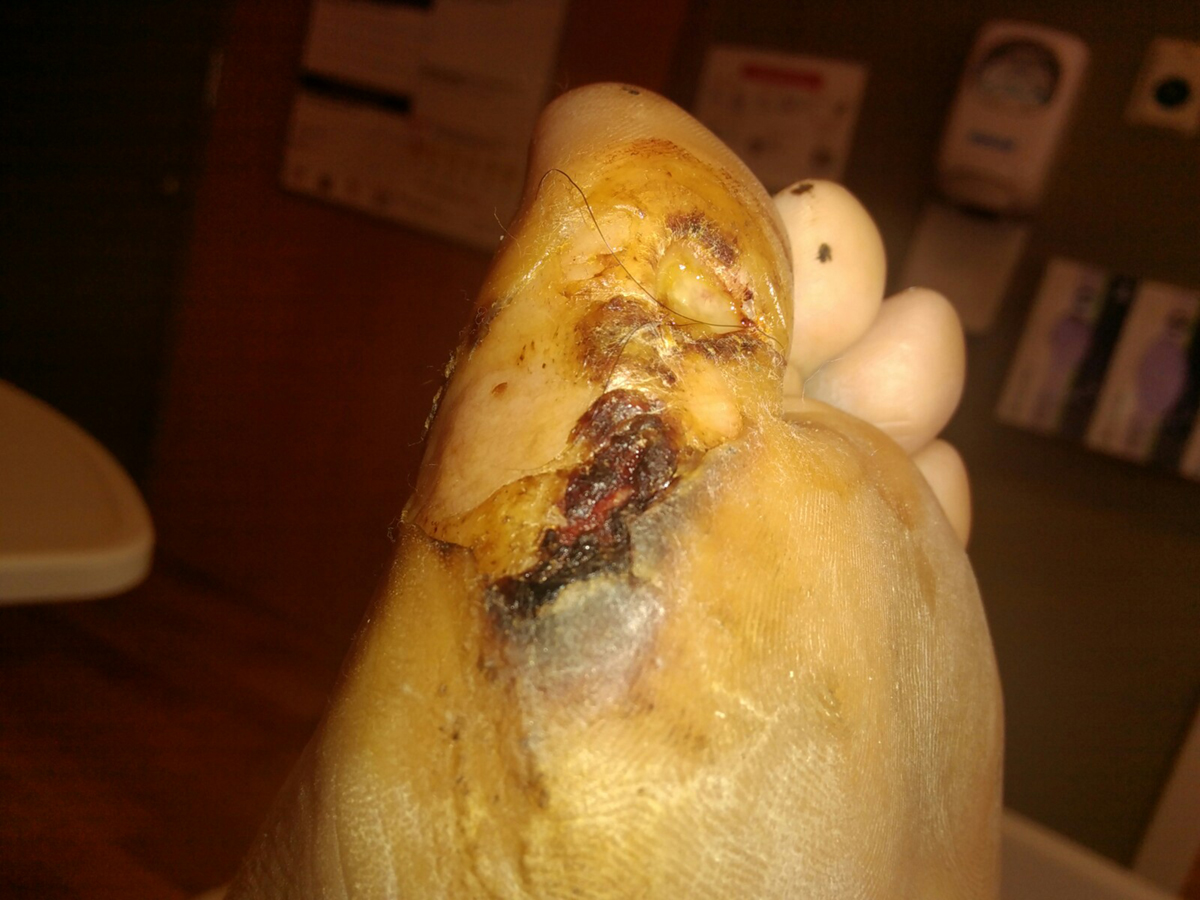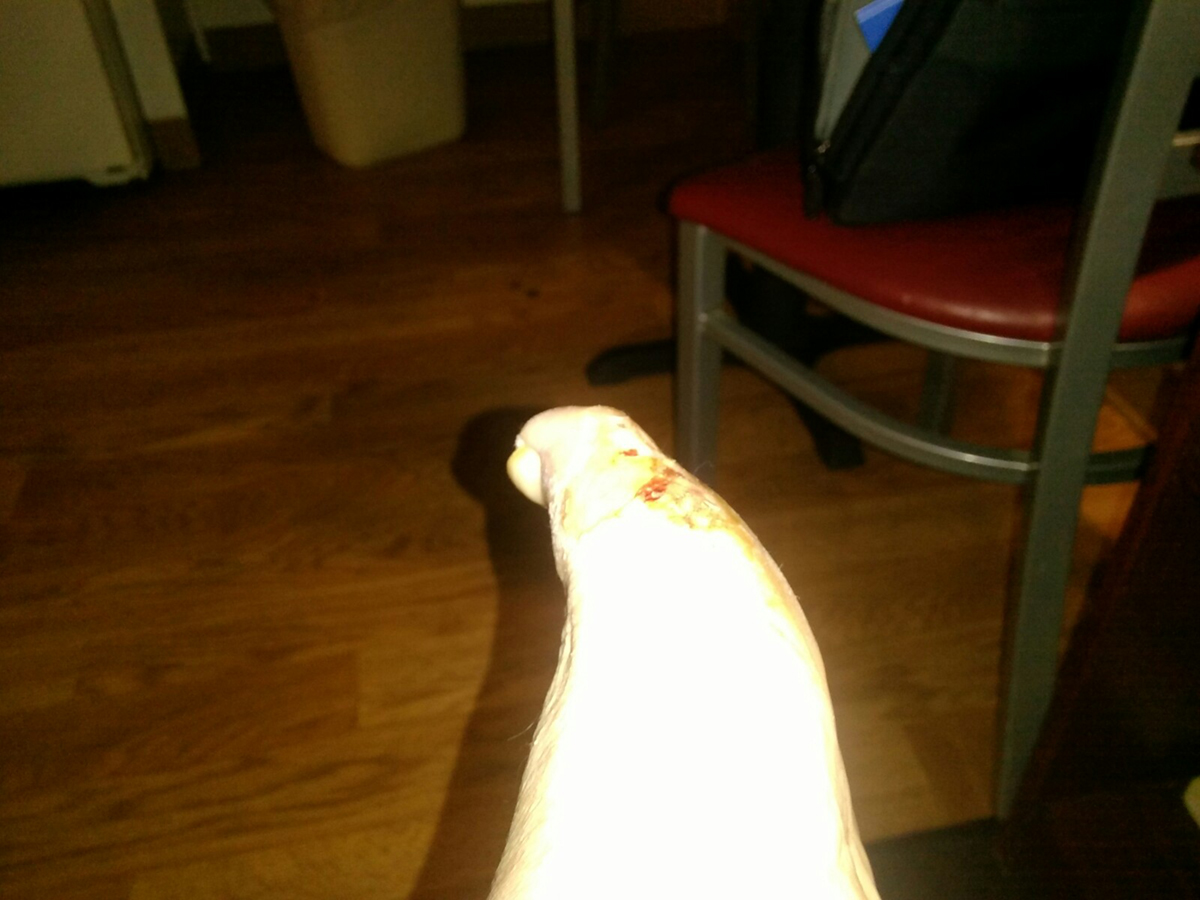Cellulitis, a bacterial infection of the skin, used to be easy to control with antibiotics. With growing problems with antibiotic resistance, however, some doctors are going back to traditional medicine to find a cure
Before the 1940's, no one could go to the doctor to get a quick shot of penicillin. Even simple infections could quickly have deadly consequences.
Suppose the year was 1932 and you, like a family friend of mine who was then 14 years old, concocted a plan to get an excused absence from school so you wouldn't have to take a geometry exam. You would go out into the back yard, roll around in some poison ivy, and then have to be allowed to stay home because rashes could be contagious, and your teacher would not allow you to infect the other children.
That's exactly what my now 97-year-old friend Vernon did, and his plan worked. Unfortunately, his plan worked too well, and the tiny cuts and scratches he got from rubbing his skin over the rough vine became infected.
The morning of the geometry test he just felt a little itchy. The morning after the geometry test he was seriously ill. He had a fever, and his legs were swollen. Dozens of tiny blisters had broken out, oozing blood and pus that had dried on his bedsheets. His mother had to build a fire, heat water, fill the bathtub, and dump Vernon, pus-filled sheets and all, into the tub until they could be removed from his body. That turned out to be the easy part of his treatment for a disease we would now call bacterial cellulitis.
Treating Cellulitis In The Pre-Antibiotic Age
Antibiotics were not easy to get in the United States until about 1950, and in other parts of the world for about a decade after that. My elderly friend Vernon had to be treated with anything his parents and his doctor (who, incidentally, charged $1 for the house call) could improvise. At first his parents tried dabbing the blisters all over his legs with Mercurochrome, a toxic liquid that worked by killing bacteria and skin at the same time. Then they had him strip to his underwear and lie out in the sun. When Vernon wasn't better after three days, the doctor came back with a salve made from a substance like cold cream, ammonia, and mercury. This treatment was so toxic that it not only killed bacteria, it stimulated the immune system to clear out dead tissue so skin could grow back.
Vernon didn't have to take any tests at school for about three weeks.
Antibiotic Resistance Is Bringing Back The Pre-Antibiotic Era
For about 20 years after the introduction of antibiotics into modern medicine, they were essentially a wonder drug. A shot of penicillin would be all most people needed to beat a potentially fatal skin infection. About 1968, however, bacteria began to appear that did not respond to antibiotics. Ironically, the more antibiotics were used, the more bacteria developed that were immune to them.
Nowadays, doctors don't even try to treat a serious case of cellulitis with methicillin, which use to be the go-to cure. For infections that appear to be life-threatening, the doctor will admit the patient to hospital and simply start giving half a dozen IV antibiotics while waiting for lab results to identify the microorganism. For less serious infections, the doctor's first remedy may be a few hours under a sun lamp (rather than a few hours in the back yard). Doctors are returning to natural remedies for cellulitis.
What Everyone Needs To Know About Cellulitis
Cellulitis is an infection of the skin that does not, at least in its early stages, kill tissue. Bacteria enter the skin through a scratch, a cut, or an abrasion. The break in the skin may be so small that it is not visible. The first sign of a problem is usually a change in the color of the skin. A blister may turn just a little black or blue. The skin may appear to be covered with dried blood, but the "blood" won't wash off. As the infection becomes more severe, there is redness, tenderness, warmth, and swelling. There may be no change for days or even a few weeks, but at some point the area of infection may start spreading from the break in the skin at the rate of an inch or two (two to five centimeters) an hour.
In severe cases, cellulitis forms buliae, purple lesions in the skin. The tissues underneath the infection may collapse. Cellulitis tends to be "more painful than it looks," and it can cause general flu-like symptoms as the condition spreads. Sudden spread of the infection, or areas of skin that seem to have gas under them, or high fever are a sign that a trip to the hospital is emergent. Often, by the time symptoms are painful enough that the patient "has to" see a doctor, the disease is so far progressed that even with modern treatment there is a significant risk of death. Some strains of bacteria that cause cellulitis carry a mortality rate of 50 percent or more, in seven to ten days, even with aggressive treatment.
What should you do to prevent cellulitis?
- Change socks and underwear regularly. Clothing that holds moisture close to the skin becomes a breeding ground for bacteria. Perianal cellulitis is a common problem in the elderly and in children under the age of three.
- Throw out old shoes, especially if (1) they have been soaked with sweat and (2) you have worn them on a farm, working in the garden, or walking through water overflowing from septic tanks, sewers, or municipal drainage systems.
- Wear socks when you wear shoes.
- If you have diabetes, keep your blood sugars in good control. Bacteria thrive in a sugar-rich environment.
- Keep athlete's foot under control.
- Moisturize dry skin, so bacteria can't come in through cracks.
What should you do if you suspect you have cellulitis?
- Let the infection drain. Tight bandages keep the bacteria in place so that they can tunnel through the skin.,
- Apply a topical antibacterial agent. Herbal remedies are fine for isolated, small (less than 5 mm, or about half an ince) areas of infection, but if the herb doesn't work in 24 hours of less, apply an antibiotic.
- Any time a red rash not caused by an allergy spreads to a diameter of 75 mm (3 inches) or more, see a doctor right away. The sooner you get treatment, the more likely it is to work. Antibiotics are effective in 90 percent of cases if they are started in time.
There is no such thing as a small skin infection in someone who has diabetes. Diabetics are especially likely to develop serious complications that require debridement (removal of infected tissue), prolonged antibiotic treatment, or even amputation when the infection spreads to bone. Diabetics need to see the doctor immediately when they find infections of the skin, especially in the feet.




Your thoughts on this